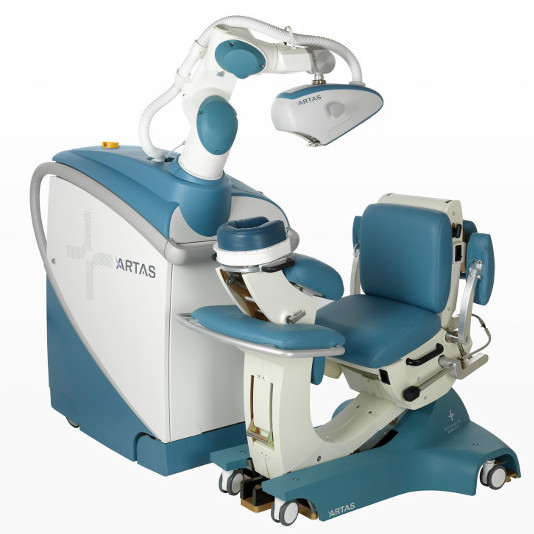Q: I have done a lot of research over the past year including seeing a dermatologist and receiving consultation from a surgeon. Both recommended Propecia and Rogaine. After my consults I researched these products online and read that they do not work on the front of the scalp to improve my receding hairline, only to regrow hair in the crown area. Can you settle the issue once and for all? Do Propecia and Rogaine work on the front of the scalp? Can they improve my receding hairline? — J.S., Great Falls, Virginia
A: Both Propecia and Minoxidil definitely can work in the front of the scalp as long as there is some hair in the area. Although their mechanisms of action are different, both Propecia (finasteride) and Rogaine (minoxidil) act to thicken miniaturized hair regardless of where it is on the scalp. In fact, there are published data ((Leyden, James et al. “Finasteride in the treatment of men with frontal male pattern hair loss.” J Am Acad Dermatol. 1999 Jun;40(6 Pt 1):930-7.)) demonstrating this improvement with finasteride in a controlled clinical trial of men with frontal hair loss.
The source of the confusion is that the FDA limited the application of the drugs to the crown on the package inserts for both Propecia and Rogaine. The FDA did this because Upjohn (the company that introduced Rogaine) and Merck (Propecia) only tested the medications on the crown in the clinical trials. Logically, the fact that DHT causes frontal hair loss and Propecia works by blocking DHT gives a reasonable explanation for the efficacy of the drug on the front of the scalp. Also, a side effect of the use of minoxidil is facial hair, so how could it not also work on the front of the scalp? It is regrettable that some doctors and many patients think that these medications won’t work on the front of the scalp. Unfortunately, many hair restoration surgeons have done little to educate the public and dispel this myth.
To reiterate, yes, both of these medications can work on the front of the scalp to prevent hair loss and thicken a thinning hairline. However, it is important to note that neither of these medications can grow hair on a totally bald scalp or lower an existing hairline. Hair follicles must exist for the medications to work. It is also important to stress that the best results come from using both finasteride and minoxidil together.
- Visit Bernstein Medical for a Hair Loss Consultation
- Submit a Photo Consultation
- Before & After Photos of hair loss treatment with Propecia and/or Rogaine
- Tips on Using Rogaine (Minoxidil)
- Tips on Using Propecia (Finasteride)



 The January 2012 issue of the Journal of Drugs in Dermatology contains an article, written by Drs. Schweiger and Bernstein, which is the first case study of eyebrow growth from the topical use of bimatoprost.
The January 2012 issue of the Journal of Drugs in Dermatology contains an article, written by Drs. Schweiger and Bernstein, which is the first case study of eyebrow growth from the topical use of bimatoprost.
 Dr. Eric S. Schweiger, an Associate at Bernstein Medical – Center for Hair Restoration, was interviewed recently for an article in the Wall Street Journal.
Dr. Eric S. Schweiger, an Associate at Bernstein Medical – Center for Hair Restoration, was interviewed recently for an article in the Wall Street Journal.


